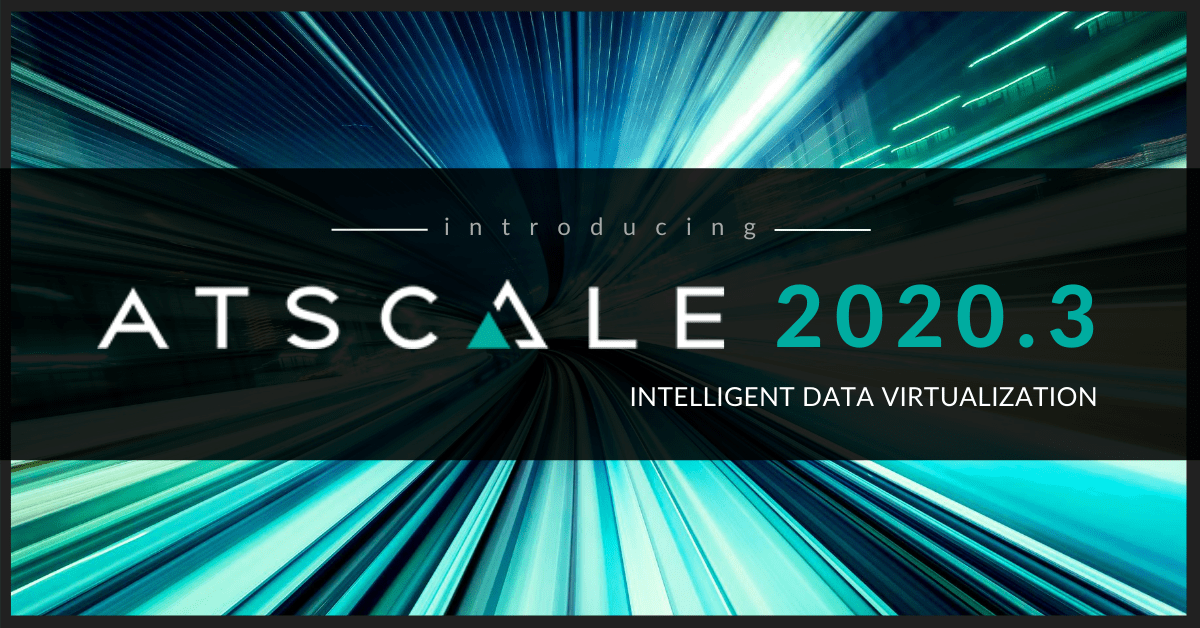July 16, 2020
Data News Roundup – Thursday, July 16th, 2020
Throughout AtScale’s history, our focus is to provide our customers with a business-friendly data interface which both abstracts away the complexity of the underlying data model and autonomously builds Acceleration Structures to optimize queries (performance and compute). As the data landscape evolved (fast!), our customers adopted Hadoop, SaaS applications, and the Cloud. All the while, they were also maintaining their tried and true technologies like RDBMSs. The idea of data gravity and the ultimate data store was quickly proving to be untrue. While the architects in the room described the most efficient way to collect data, the business requirements continue to be complex analytics with speed, dependability and security.
AtScale knew that we needed to orchestrate data and services. Owning the data meant another copy of the data, another version of the data and stored in yet another location. And while it’s very powerful to autonomously generate optimized data structures, understanding that the data landscape is ever evolving is critical. Tomorrow’s vision of the data landscape is very different than today. At AtScale, we focus on bringing the analytics to the end consumer easily and quickly while supporting the data journey that we’re all on.
AtScale 2020.3 is another major step in this direction. Continuing our investments into the Cloud, Hybrid Cloud and on-premises platforms, making advanced analytics available to all and hardening enterprise-grade capabilities. We’re proud to announce:
- Azure Databricks Support – Azure Databricks is a leader in the cloud and data transformation space. Given their ability and reach, there has been a growing demand to support AtScale directly on Azure Databricks. We are thrilled to announce that AtScale directly on Azure Databricks is now available.
- Enhance Preferred Aggregate Storage – AtScale 2020.2 introduced the Preferred Aggregate Storage feature which for the first time introduces the concept of locality for our autonomous data engineering. AtScale then makes autonomous and intelligent decisions about where to locate these structures and how best to use them.
- Orchestrator Phase Two – Building upon our initial release of Orchestrator, this version has been further enhanced to provide more capabilities including a physical & logical view of AtScale nodes, improved Violation interface for better management and fault identification, mature managed services interface (install will now install Orchestrator and the rest of AtScale is deployed and configured from there) and new logging service!
- Lots of improvements to our core platform:
- Virtualization Read Partitioning – Succeeding at data virtualization for BI workloads is all about the details. Accessing multiple platforms is old news. How to effectively retrieve data at scale for efficient coalescence requires strong predicate pushdown, dialect awareness and read partitioning.
- Just get better everyday – Improved Query Page performance and better large query text handling. Improved Excel Pivot Table latency
- Enterprise Data Access – New Incremental indicator data type support – huge for our Google BigQuery and Snowflake friends. Hadoop is still banging away. Back-support for MapR and keeping an eye on CDP.
- Security, security, security – in addition to always respecting the underlying system’s security rules, we’ve added more auditing capabilities like injecting the user name and query id into SQL for easier tracking and forensics.
- Microsoft PowerBI & AtScale – Microsoft made an AtScale connector available for preview, but in this release AtScale is proud to announce official support. The AtScale connector is a MDX-based connector publishing the full semantic layer of AtScale virtual cubes including hierarchies, drill-down paths, measures.
- Tableau – Keeping up with Tableau’s improvements and changes. AtScale support Tableau 2019.3 and 2019.4 in AtScale 2020.3, and we expect the Tableau 2020.x branches to follow quickly!
Here at AtScale, it does not go unnoticed that the world is going through some major crises. While many of our friends in the tech industry are making data more and more available, AtScale has contributed to this effort by making data analytics available. AtScale has modeled several publicly available datasets together related to the COVID-19 crisis. Check it out on our website.
Our impact on the COVID Near You application led by Boston’s Children Hospital was also recently mentioned by Forbes. Here’s a quote from the article:
“To help make sense of the information in real-time, COVID Near You recently partnered with AtScale, a provider of intelligent data virtualization solutions, which is offering free access to its Cloud OLAP Model. This facilitates the integration with users’ preferred analysis tools, allowing public health agencies to drill into the data and gain fresh insights in real time.”
We hope to continue to enrich the public data analytics sphere by delivering analytics rather than just rows and columns. More to come!
ANALYST REPORT